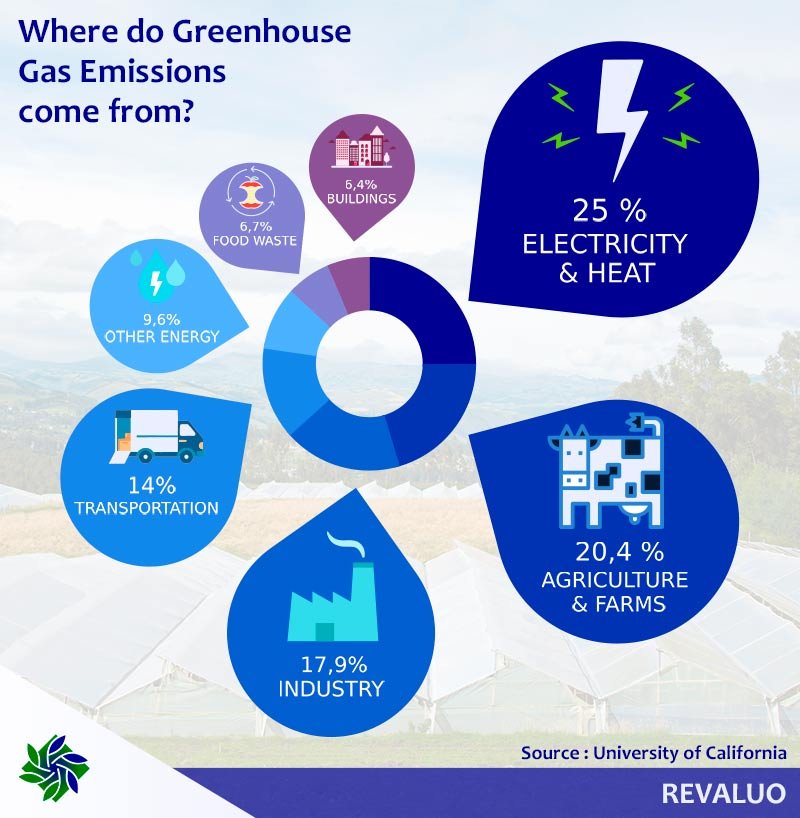According to an article by the “University of California”, the answer to this question would be like to be: “In many places – it’s complicated,” which is a perfectly reasonable answer. It is understandable as most people don’t have this information at their fingertips. It continues referring to a 2014 study that found that people tend to overestimate the effects of some of the more visible sources, such as vehicle exhaust and deforestation, but largely overlook the effects of meat and dairy production. For this reason, it is important to break the subject down into smaller parts to analyze it.
Which sectors contribute most to greenhouse gas (GHG) emissions?
Major greenhouse gas emissions sources
- Electricity & Heat: it makes up for the largest part of global emissions, about 25%. It considers mainly industrial sources of electricity and heat such as power plants and steam plants. Burning sources for power generation constitute the largest source of greenhouse gas (GHG) emissions in the world. Thus, the energy transition towards zero-emission sources of energy (wind, geothermal, solar, or nuclear) remains fundamental. This means reducing the dependence on fossil fuels, natural gas, and coal.
- Agriculture & Land: is the second-largest source of GHG emissions and still account for a large part, 20.4%. This includes deforestation and emissions from livestock in a greater proportion. A lower share involves fuel used for agriculture, forestry, and fishing, direct soil emissions. Forest fires also enter this category.
- Industry: our current production and economic patterns are highly polluting. Indeed, manufacturing products make up 18% of global emissions. This involves not only the process of making a product but also the whole supply chain. Human activity nowadays is complex and comprises lots of different industries: chemical manufacturing and use, metal production, cement production especially. These industries make significant emitters.
- Transportation: constitutes 14% of global greenhouse gas emissions (GHG). It includes the means of transport we use every day but more importantly, it involves freight transport. Freight transport from aviation, rail, and refrigeration systems adds larger proportions of GHG emissions.
Minor greenhouse gas emission sources
- Other Energy: although it might not seem obvious, accidents and small leaks during petroleum refining and similar activities account for 9.6% of emissions. Some of these leaks imply methane leaks, a gas that is roughly 25 times as potent as a greenhouse gas as CO2.
- Food Waste: it accounts for 6.7% of global emissions. It comprises the whole supply chain, from the farm to the truck, the storage, the markets, and restaurants until our kitchens. Note that the decomposition of food waste alone produces methane gas.
- Buildings: refrigeration systems at supermarkets, kitchens at restaurants, fire extinguishers, and all the energy we use in commercial and residential buildings contribute 6.4% of global emissions.
It is worth mentioning that categories depending on the consumer, such as food waste, buildings, or transport, can make little impact in comparison to other categories. Rather, political will could reduce emissions by up to 70-80% when opting for real renewable energies. Those energies that will not pollute at the end of their useful lives. Technologies recycling, processing, and transforming waste in a clean and controlled way with almost zero emissions. Using low-carbon technologies and WTE systems like REVALUO to reduce waste and energy consumption, can make the difference.


